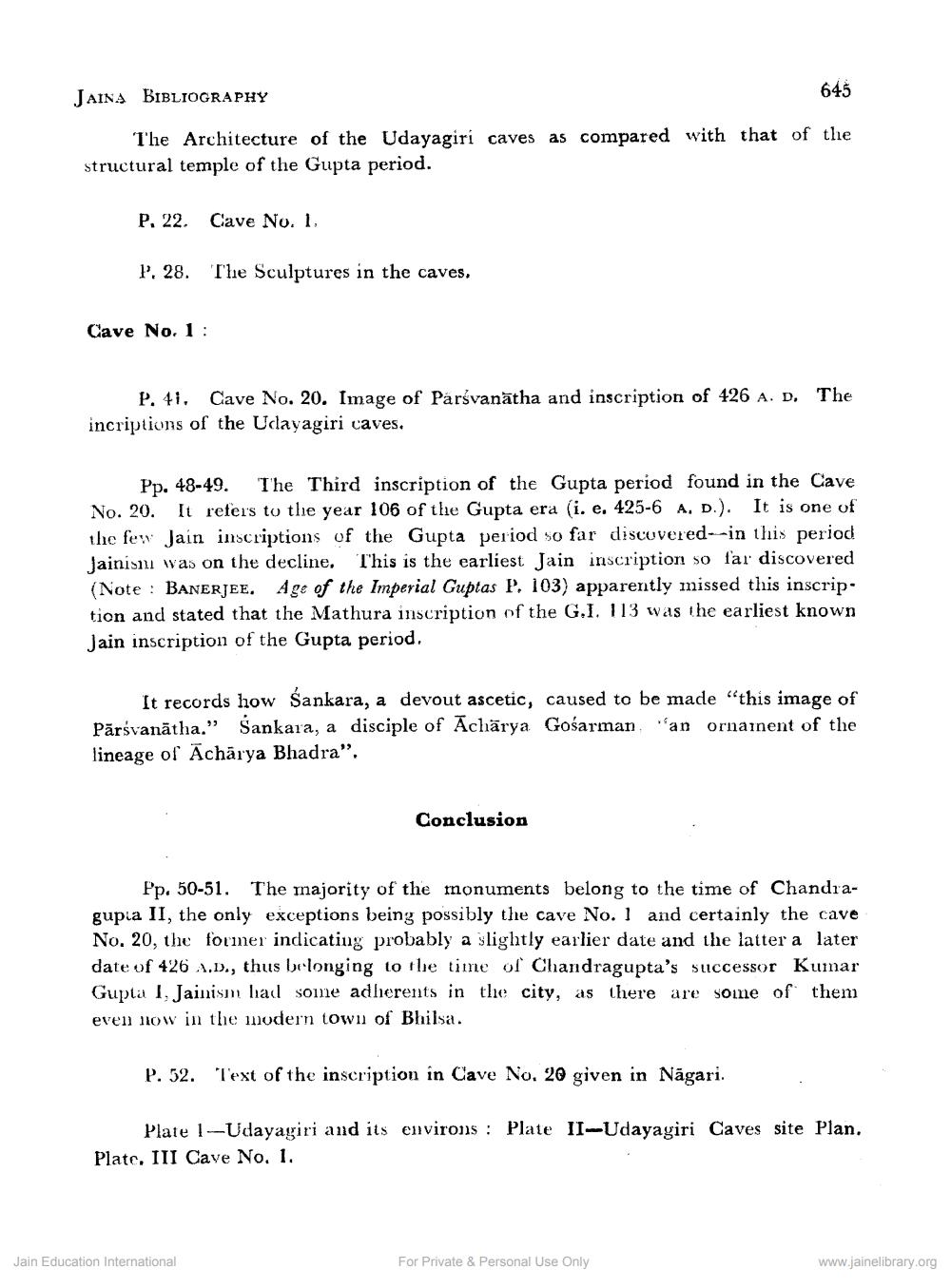________________
JAINA BIBLIOGRAPHY
645
The Architecture of the Udayagiri caves as compared with that of the structural temple of the Gupta period.
P. 22. Cave No. 1,
P. 28.
The Sculptures in the caves,
Cave No. 1:
P. 4i, Cave No. 20. Image of Parśvanātha and inscription of 426 A. D. The incriptions of the Udayagiri caves.
Pp. 48-49. The Third inscription of the Gupta period found in the Cave No. 20. It refers to the year 106 of the Gupta era (i. e. 425-6 A, D.). It is one of the few Jain inscriptions of the Gupta period so far discovered in this period Jainism was on the decline. This is the earliest Jain inscription so far discovered (Note: BANERJEE. Age of the Imperial Guptas P. 103) apparently missed this inscription and stated that the Mathura inscription of the G.1. 113 was the earliest known Jain inscription of the Gupta period.
It records how Sankara, a devout ascetic, caused to be made "this image of Pārsvanātha." Sankara, a disciple of Achārya Gošarman. an ornainent of the lineage of Acharya Bhadra".
Conclusion
Pp. 50-51. The majority of the monuments belong to the time of Chandragupia II, the only exceptions being possibly the cave No. 1 and certainly the cave No. 20, the former indicating probably a slightly earlier date and the latter a later date of 426 4.1)., thus belonging to the time of Chandragupta's successor Kumar Gupta 1, Jainism had some adherents in the city, as there are some of them even now in the modern town of Bhilsa.
P. 52.
Text of the inscription in Cave No. 20 given in Nāgari.
Plate 1-Udayagiri and its environs : Plate II-Udayagiri Caves site Plan, Plate, III Cave No. 1.
Jain Education International
For Private & Personal Use Only
www.jainelibrary.org




